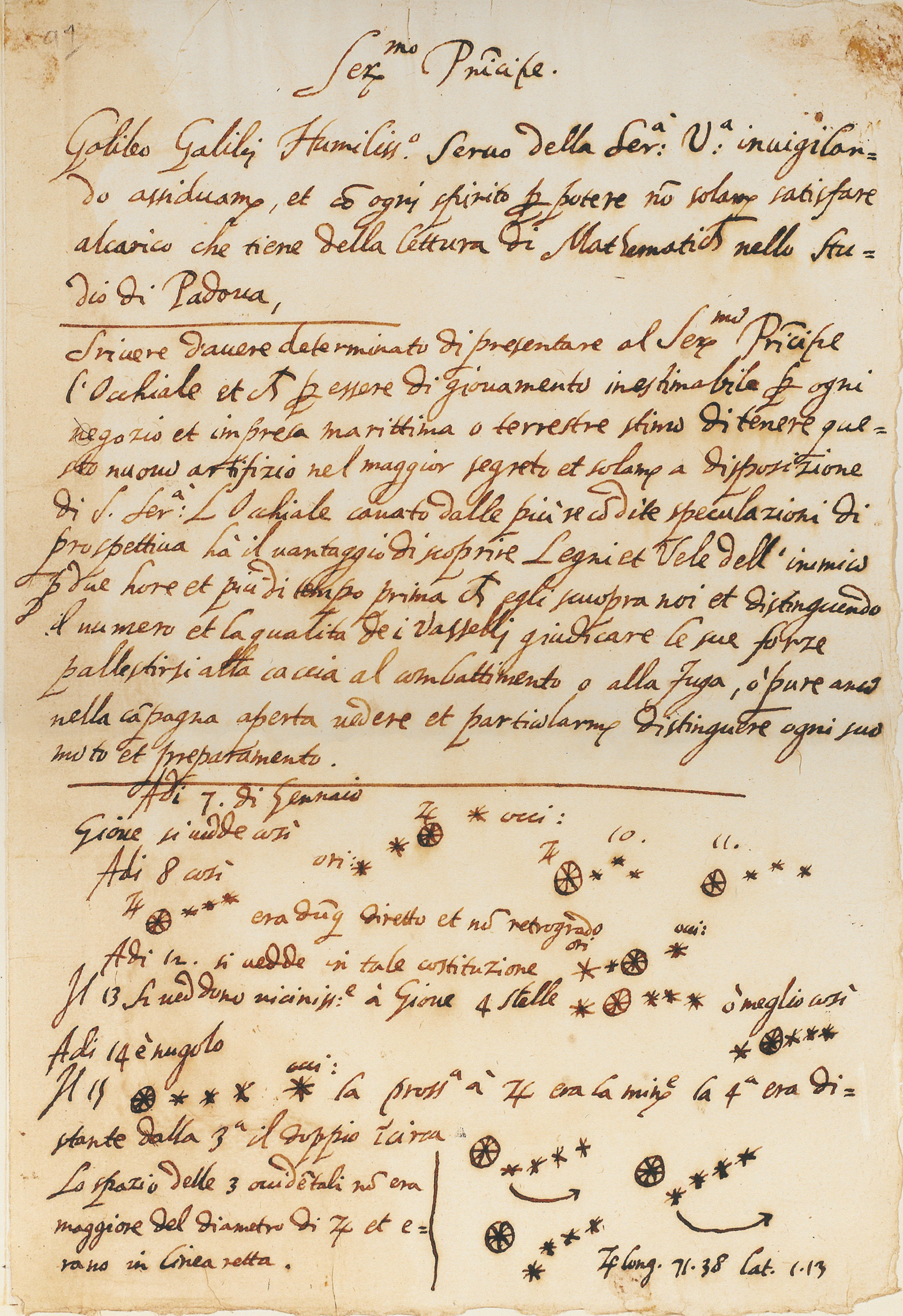Guest blog post by: Dale (Trip) Apley III, Skyline High School, 2017
After seeing Galileo’s finger on display in the Galileo Museum of Science in Florence, Italy, I have been curious about Galileo and his work. My science teacher, Mr. Coupland, at Skyline High School, Ann Arbor, Michigan, challenged us to duplicate Galileo’s observations of Jupiter, which led to the discovery that moons orbited that planet and not Earth. I was definitely up for this challenge.
While searching the Internet attempting to figure out the original lens magnification of Galileo’s spyglass (telescope), I came across a webpage describing a letter draft that Galileo had written to the Doge of Venice, Leonardo Donato, in August 1609. In brief, Galileo asks for money to help further development of his spyglass. But in the second half of the page, there are several drawings of Jupiter and its moons as they were observed in January 1610. When I looked at the website closely, I realized that this document was located at a walking distance from my house, in the Special Collections Library at the University of Michigan Library. My mother suggested that we might be able to see this letter first hand. Thus we contacted the library to arrange a viewing.

Draft of a letter to Leonardo Donato, Doge of Venice, August, 1609, and Notes on the Moons of Jupiter, January 1610.
We were fortunate to have Athena Jackson, Associate Director of the Special Collections Library, show us the letter personally. We were led into the Special Collections' teaching space, and after Ms. Jackson carefully opened the protective case, there it was, right in front of me, the actual manuscript in Galileo’s own handwriting. My first impression was that the document was in perfect condition; I could not believe it was over 400 years old. It was amazing to see Galileo’s first observations of the varied locations of Jupiter’s moons on different nights in January of 1610. This sheet of paper was where Galileo actually recorded his discovery. These observations eventually led to his support of the heliocentric view of the universe. Indeed, it is amazing to view this historical piece and to think about how theories of the universe were being questioned during the time it was written.
As required for my project, I observed Jupiter and its moons on several nights. Below is an example of a page from my write-up. Our challenge was to identify the moons, so I needed to show the distance and brightness of Jupiter’s moons. In Galileo's document, he just recorded the order of the moons. For his book, Sidereus Nuncius, Galileo did more detailed drawings, which included the relative distance of the moons from Jupiter.

Page 2 of Apley's Report: "Jupiter Moons Science Experiment"
Galileo was one of the fathers of the scientific revolution and, because he challenged beliefs of his time, he was convicted of heresy and almost put to death. Even though Galileo was exonerated 350 years later, to me he represents the difficult path that scientists must take in their quest for the truth and understanding. It is inspiring that Galileo’s famous document is housed at a great research institution like the University of Michigan, where today scientists are recording their findings that also may challenge how we think of the universe.
I want to thank the University of Michigan Student Astronomy Society for assisting me with my Jupiter moons experiment and inviting me to attend their Sky Viewing Nights at the Angell Hall Observatory. I was fortunate to be able to see this well-preserved document in person, and am grateful to Ms. Jackson and the Special Collections Library staff for sharing it with me.